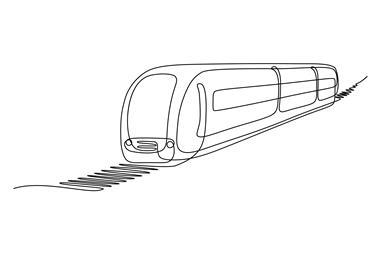Axa has warned of an ‘unusually high spike’ in crime at empty commercial premises. Here’s what businesses can do to protect themselves.
Axa has warned of a steep rise in the number of empty commercial properties being targeted by criminal gangs.
The insurer said criminal activity had been gradually increasing over the years, but had seen an “unusually high spike” in the last three months.

Fly tipping, vandalism and theft are among crimes to have been reported at sites across the country, resulting in thousands of pounds of damage.
And in one case around three months ago, a newly refurbished building owned by an Axa customer was targeted, with around £1m of damage caused.
Dougie Barnett, director of customer risk management at Axa Commercial, said: “It’s concerning to see a rise in criminal activity at vacant sites, both in terms of the number of premises being targeted and the level of violence involved.
“When the sites are used for fly tipping, all manner of rubbish can be dumped including chemicals and medical waste, requiring a professional clean-up operation which is costly and time-consuming.
“Thefts from these properties include valuable building materials such as copper pipe and electrical cabling, which are usually ripped out causing considerable damage.”
Key risks to be aware of:
Unoccupied buildings can suffer many problems.
The following are a number of problems the property owner may be required to protect against:
- Fire
- Wilful damage
- Theft of contents
- Vandalism
- Theft/damage to building services
- Squatters
- Fly tipping
- Establishment of travellers’ encampments
- Injury to third parties – particularly children
- Theft of building materials – i.e. lead from roofs
- Deterioration of building fabric through water ingress.
Axa said it was working with customers to make them aware of the issue and to help them protect their properties.
Around 500 vacant commercial premises that Axa insures are looked after by First Response Group, which has provided security services to the insurer for more than 20 years.
Chief executive Simon Alderson said protecting the sites was becoming increasingly challenging as the gangs become more organised and more violent.
He said: “Once a gang breaks into a site, word gets out that there’s somewhere to dump rubbish and it’s soon inundated. The situation has often escalated by the time the police arrive and the damage is already done.
“Proactive, visible security remains one of the most effective ways to deter this kind of criminal behaviour. But when gangs are determined and start using intimidation, even the most experienced teams can face serious challenges.
“Our canine security teams are highly trained to handle difficult situations, but there are times when things escalate.
“A few months ago, one of our officers was injured during an altercation - a stark reminder of the real risks involved and why strong, consistent site protection is so important.”
How to protect your premises
Before embarking on a strategy to protect a building during a period of unoccupancy, risk managers must do a quick and basic risk assessment. Elements to consider include:
- What assets need protecting
- Potential entry points
- Fire risks
- Injury risks
- Materials being stored
From there, firms can look for ways to discourange intruders. This should include making the site unttractive and difficult to enter. Five key steps to take are:
1. Strengthen security measures
Unoccupied buildings are prime targets for intruders, vandals, and squatters. To deter unauthorised access, ensure all entry points are secure. Install robust locks on doors and windows, and consider boarding up vulnerable openings with sturdy materials. Perimeter fencing should be intact and gates secured with heavy-duty padlocks. Additionally, sealing letterboxes can prevent the accumulation of mail, which signals vacancy.
2. Maintain essential utilities and services
While it’s advisable to disconnect non-essential utilities to reduce risks, certain services, such as sprinkler systems, should remain operational. Maintain heating to prevent pipes from freezing, ensuring the temperature stays above 4°C. Fire and security alarms should remain active and be regularly tested. Disabling unnecessary utilities minimises hazards like leaks or electrical faults, while maintaining critical systems ensures continued protection against fire and intrusion.
3. Conduct regular inspections
Regular inspections are vital for early detection of issues such as damage, vandalism, or weather-related problems. Each visit should be documented, noting any changes or concerns, and actions taken to address them. This can be crucial for insurance purposes, demonstrating due diligence in property management.
4. Implement fire safety precautions
Fire risks increase in unoccupied buildings due to potential arson or unnoticed electrical faults. Ensure that fire detection systems are operational and consider linking alarms to a monitoring centre for prompt response. Remove combustible materials from the premises and secure areas that could be used to start fires. If any hot work (like welding) is necessary, issue a permit outlining safety procedures to prevent accidental fires.
5. Communicate with insurers and authorities
Inform your insurance provider when a property becomes unoccupied, as this can affect coverage terms. Some policies may require notification after a certain period, such as 45 days. Provide details about the property’s status and any measures taken to secure it. Additionally, notify local authorities if necessary, especially if the building poses any safety concerns.














No comments yet